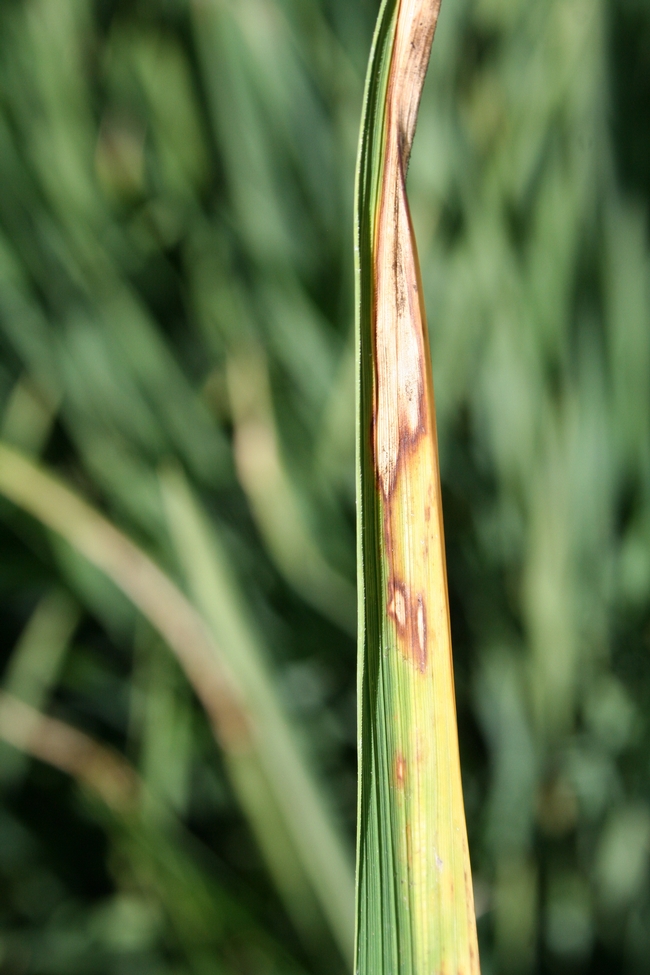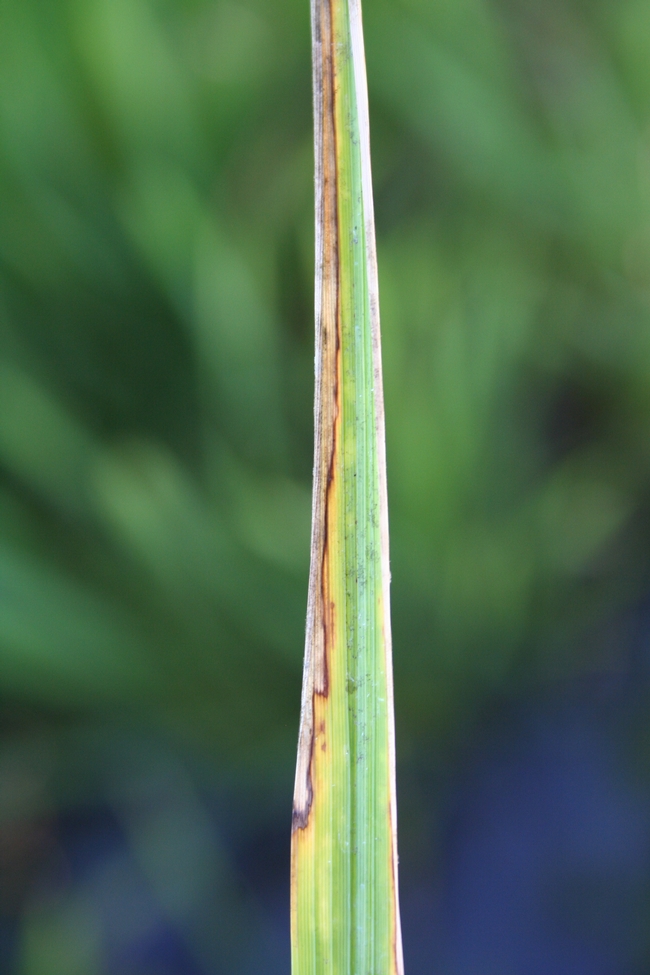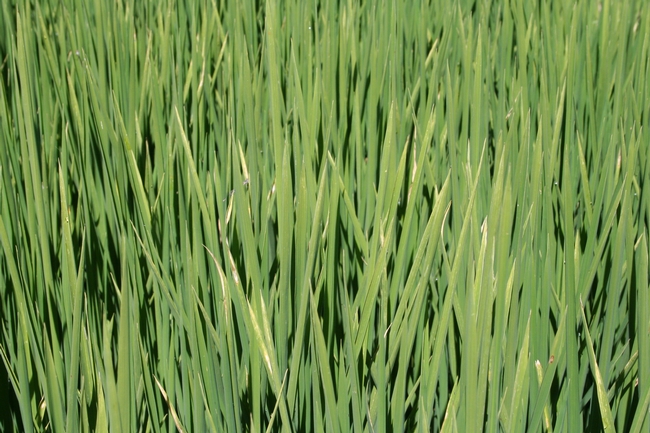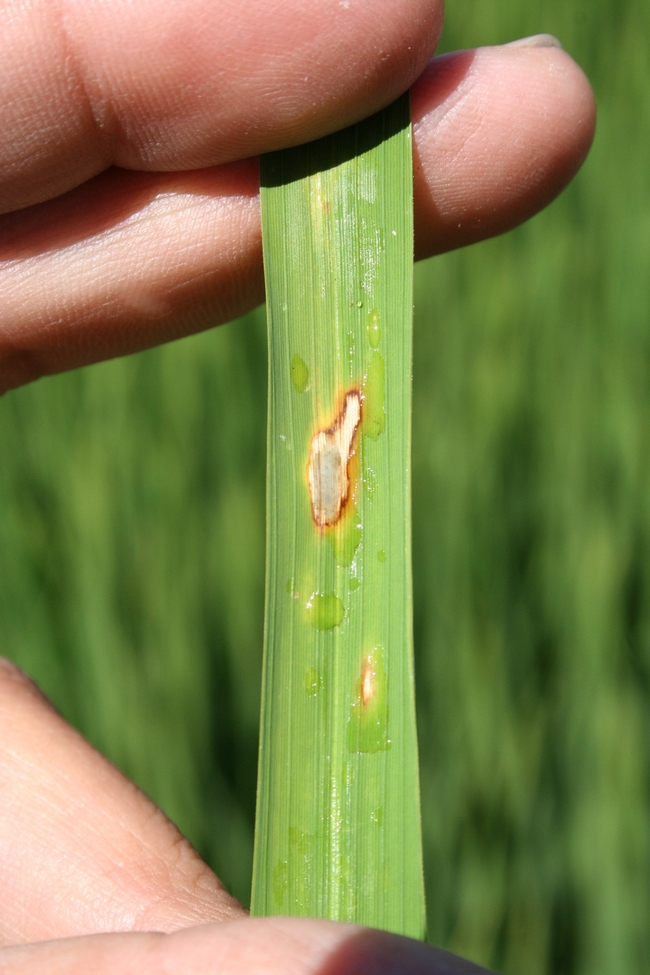Our two year stretch of little to no blast might be over. I visited an M-209 field last week that seemed to be infected with blast. The lesions appeared to me like propanil drift burn; however, the yellow halo around the lesions made the PCA suspicious. Paul Sanchez, pathologist at the Rice Experiment Station, collected some leaf samples and was able to confirm it is blast.
According to Paul, changes in environmental conditions may be why the lesions did not look like your typical blast lesions. When conditions are favorable, the fungus' spores germinate and infect the tissue. But if conditions change and become unfavorable for the fungus growth and sporulation, the fungus dies and the tissue then has that burned look instead of the white-gray powdery look.
 |
 |
Some of the lesions did look more like the typical blast lesion.
M-209 is a variety closely related to M-205, a variety considered to be susceptible to blast. Since we have not seen blast in the field since M-209 was released, we do not know what level of susceptibility M-209 has. This might be the year we find out.
At this point, a fungicide treatment is not recommended. However, a treatment near heading may be appropriate considering that the field and area have a history of blast epidemics.
Attached Images:


